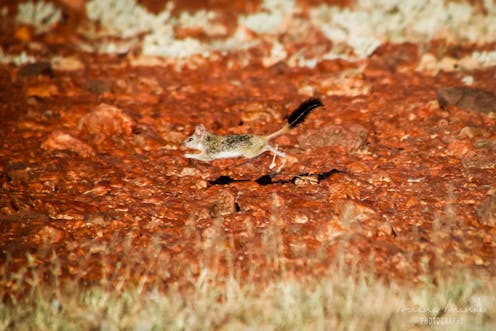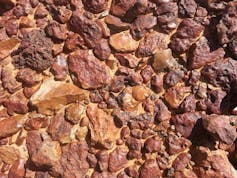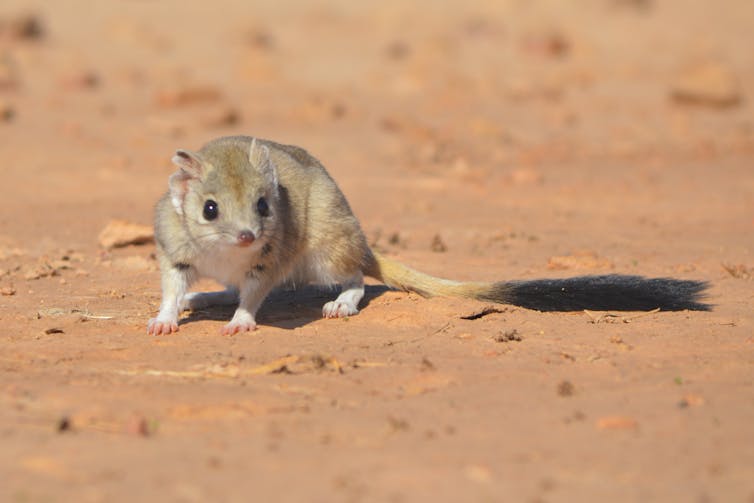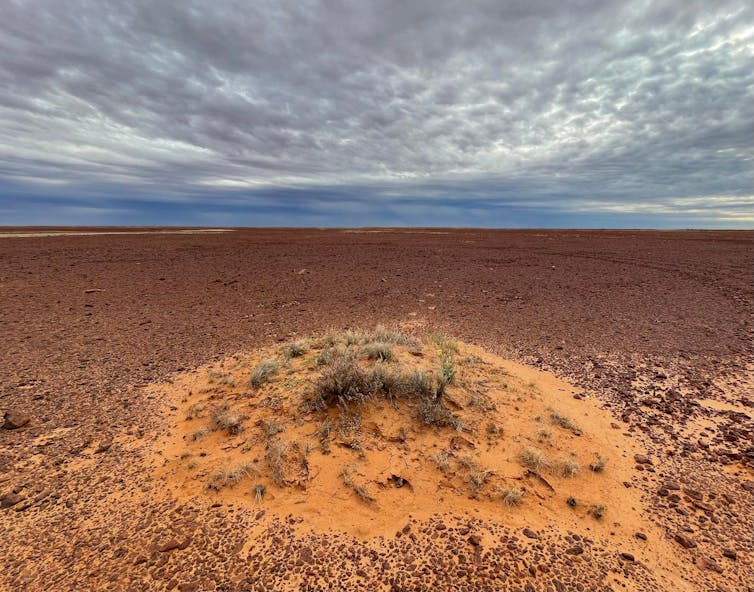Source: The Conversation (Au and NZ) – By Katherine Moseby, Associate Professor, UNSW Sydney

Ariana Ananda
Australia is home to more than 350 species of native mammals, 87% of which are found nowhere else on Earth. But with 39 of these species already extinct and a further 110 listed as threatened, there’s every chance many will vanish before you even knew they existed. So here’s one we think you simply must know (and save), before it’s too late.
The charismatic kowari is a small carnivorous marsupial. It was once common inland but is now found only in the remote deserts of southwest Queensland and northeastern South Australia, in less than 20% of its former range.
This pint-sized predator fits in the palm of your hand. Its bright eyes, bushy tail and big personality make it the perfect poster child for the Australian outback. But with just 1,200 kowari left in the wild, the federal government upgraded its conservation status in November from vulnerable to endangered.
Reversing the decline of the kowari is within our grasp. But we need public support and political will to achieve this. It requires limiting grazing of cattle and sheep, while keeping feral cat numbers under control.
Read more:
Threatened species recover in fenced safe havens. But their safety is only temporary
Meet the kowari
The kowari (Dasyuroides byrnei) is a skilled hunter that stalks mice, tarantulas, moths, scorpions and even birds. Alert and efficient, they attack their prey voraciously.
Formerly known as the brushy-tailed marsupial rat, or Byrne’s crest-tailed marsupial rat, the kowari is more closely related to Tasmanian Devil and quolls.
The Wangkangurru Yarluyandi People use the name kowari, while the Dieri and Ngameni peoples use the similar-sounding name kariri.

Katherine Moseby
Kowaris live in stony deserts. They mainly inhabit remote treeless “gibber” plains. These areas of flat, interlocking red pebbles form vast pavements that could be mistaken for the surface of Mars.
In the outback, where temperatures can exceed 50°C, kowaris beat the heat by sheltering in burrows dug into sand mounds. At night they emerge to race across the plains, their head and distinctive brushy tail held high, pausing regularly to scan for predators and prey.
During chilly winter days, kowaris slow their metabolism to conserve energy. They go into a state of torpor, which is a daily version of hibernation.
Read more:
Torpor: a neat survival trick once thought rare in Australian animals is actually widespread
At the two main South Australian sites, the number of animals captured in trapping surveys declined by 85% between 2000 and 2015. At this rate, the species could disappear from the area within two decades.
The entire population is estimated to number as few as 1,200 individuals scattered over just 350 square kilometres. That’s a combined area of less than 20km x 20km.
Based on this evidence, the conservation status of kowaris was upgraded from vulnerable to endangered in November last year.

Andrea Tschirner
Shrinking populations in the stony desert
Kowaris have been declining for a while but are suddenly on the fast track to extinction. How can that be, when they live in one of the most vast and remote parts of Australia?
Threats include land degradation from pastoralism, and predation from introduced feral cats and foxes.
But it’s complicated. Threats can combine, having a synergistic effect (greater than the sum of their parts). And then there are climate influences.
Heavy rain in the desert triggers a cascade of events that culminates in an explosion of feral cat numbers.
When conditions dry out again, the cats switch to eating larger or more difficult prey such as bilbies and kowaris, often causing local extinctions. In southwest Queensland, feral cats most likely wiped out one population of kowaris and decimated another.
Huge efforts to control cat plagues have saved the kowari and bilby populations in Astrebla Downs National Park from local extinction so far, but other areas have succumbed.
In SA, all the remaining kowari populations are on pastoral stations used for grazing cattle.
Cattle can trample kowari burrows. They can also compact the sand mounds, making it difficult for kowaris to build burrows in the first place. And they eat the plants on the mounds, reducing the availability of both food and shelter. This makes kowaris easy prey.
Over the past few decades, pastoralism has intensified. Nearly half of Australia (44%) is covered in pastoral leases where many threatened species occur.
Domestic stock usually graze close to watering points such as bores and troughs. More and more watering points are being established, to make more of the pastoral lease accessible to stock. So the area protected from grazing is shrinking as cattle encroach further into kowari territory.

Katherine Moseby
How can we save the kowari?
We have the knowledge and tools required to save this species from extinction. We just need decisive leadership and sufficient funding to put these plans into action.
State governments should provide more resources for desert parks so rangers can monitor feral cat numbers and respond rapidly to plagues. We can make use of new technology such as remote camera traps checked via satellite. These measures would also protect the last remaining stronghold of the bilby in Queensland, another nationally threatened mammal.
The pastoral industry and governments must work together to review watering-point placement and reduce grazing pressure in known kowari habitat.
By closing some pastoral watering points and ensuring a portion of each lease (possibly 20%) is away from waters, we can reduce the harm of stock and provide refuges for threatened species. Pastoral companies could show leadership and implement these actions themselves rather than waiting for governments to act.
In the meantime, reintroductions into safe havens is one stopgap measure helping to prevent imminent kowari extinction. In 2022, 12 kowaris were successfully reintroduced to the 123 square km fenced Arid Recovery Reserve in northern SA. The population has expanded since release. Removing cats, foxes and domestic stock from the reserve has given kowaris a chance to reclaim a small portion of their former range.
But safe havens are small and we need to act on a larger scale. If we don’t, the kowari may become yet another Australian species lost before you’ve even seen it.
Thanks to Genevieve Hayes, former ecologist at Arid Recovery, for coordinating the reintroduction of the kowari at Arid Recovery and commenting on the draft of this article.
Read more:
So you want to cat-proof a bettong: how living with predators could help native species survive
![]()
Katherine Moseby is co-founder and chief scientist at Arid Recovery. She receives contract work from Arid Recovery to assist with conservation and restoration works.
Katherine Tuft is Chief Executive at Arid Recovery which has received grant funding from the federal government and other sources to support research and conservation for the kowari.
– ref. Meet the kowari: a pint-sized predator on the fast track to extinction – https://theconversation.com/meet-the-kowari-a-pint-sized-predator-on-the-fast-track-to-extinction-219598







